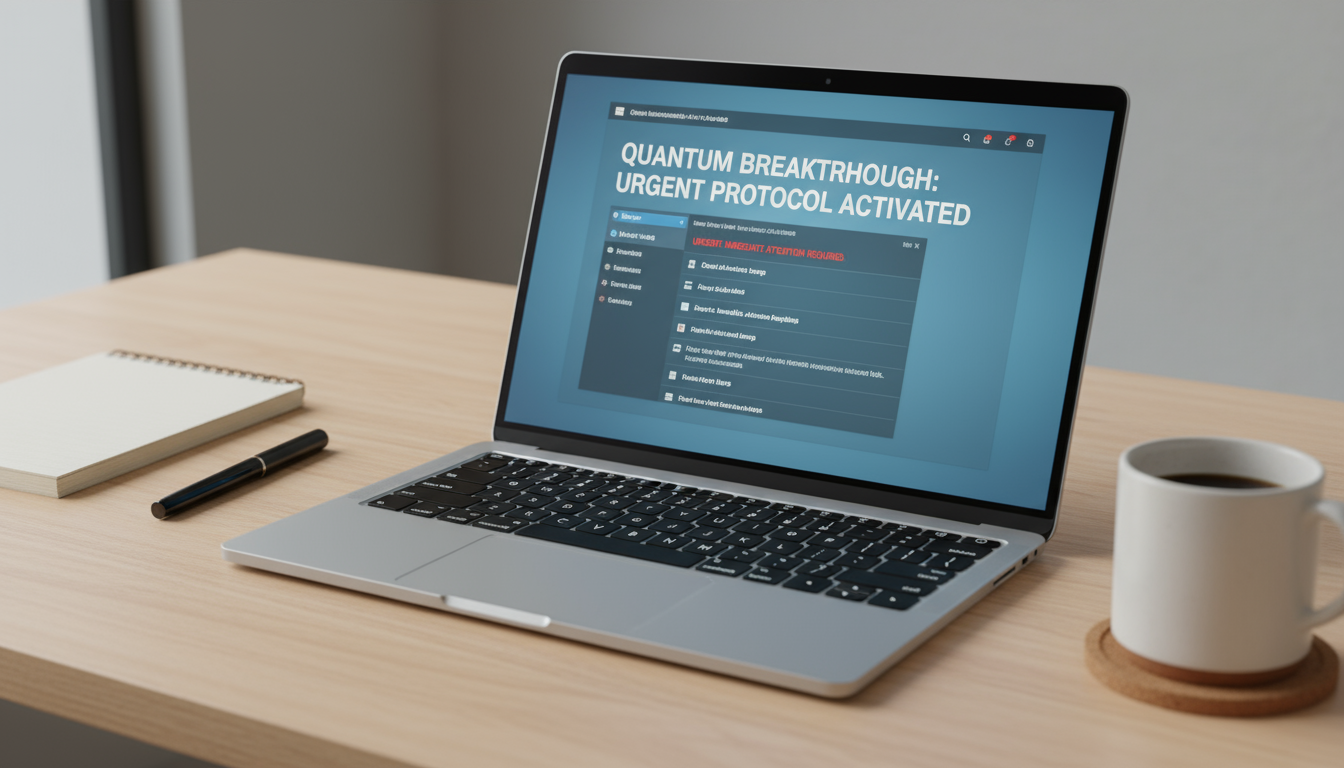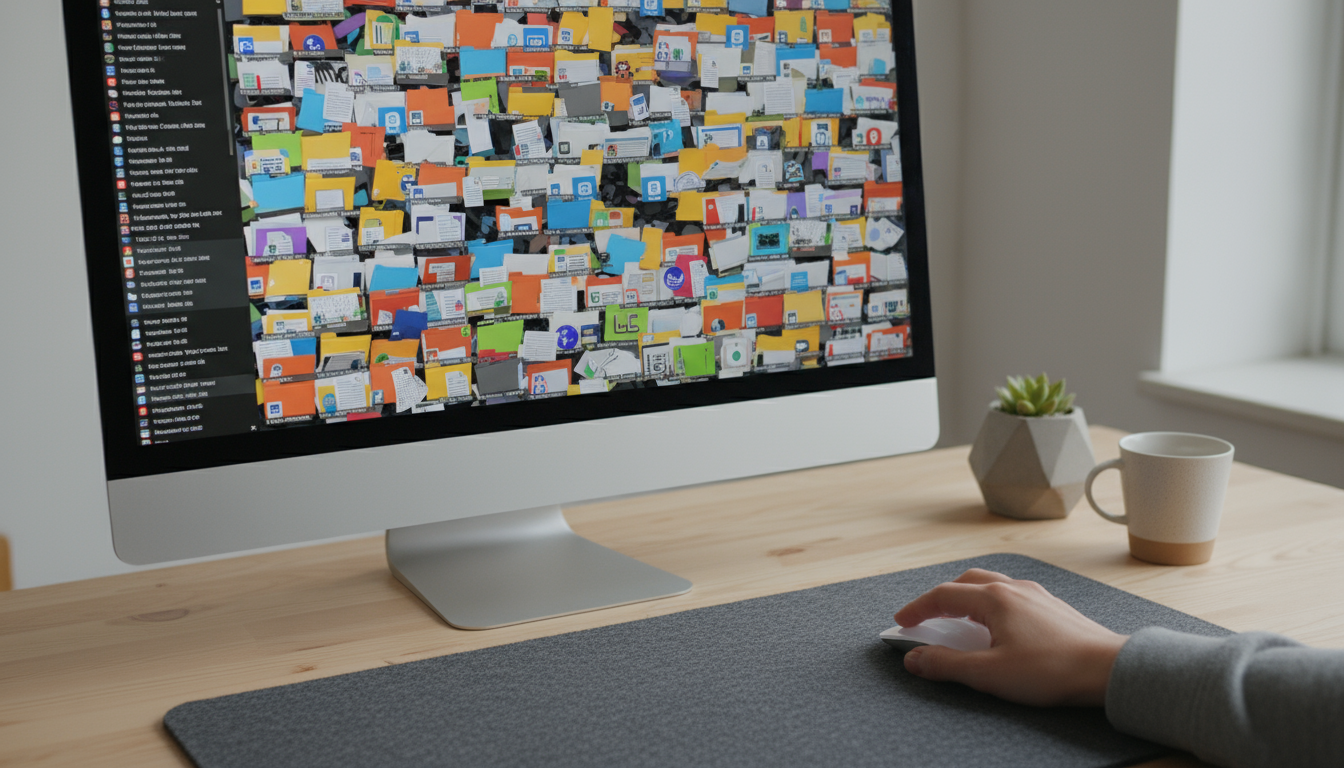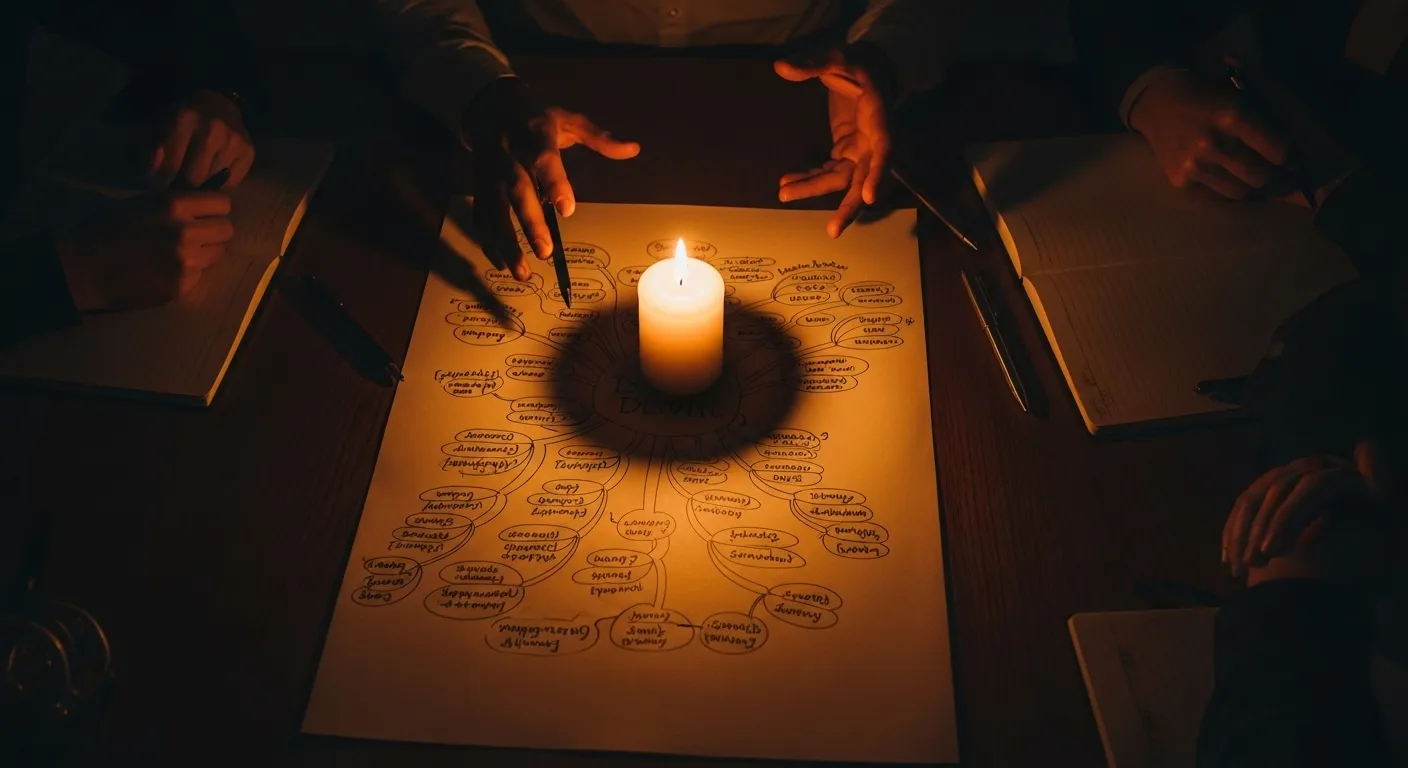
You know the feeling. You’re sitting at your desk in your city apartment, the sound of traffic a constant hum in the background. Your to-do list is a mile long, filled with big, important projects. But what’s really draining your energy? It’s not the big stuff. It’s the swarm of tiny, nagging tasks. The email you need to reply to. The bill you need to pay online. The dirty coffee mug sitting on your desk. Each one is a tiny papercut on your productivity, a small piece of mental clutter that whispers, “I’ll do it later.”
Later never comes. Or, when it does, that single small task has been joined by dozens of its friends. Now, instead of one two-minute job, you have an hour of administrative dread. This is a common pain point for busy professionals and students alike. You have the ambition and the big goals, but the tiny pebbles of undone tasks are tripping you up. You need a system, but not another rigid, complicated one that requires an hour of setup. You need a simple, pragmatic fix that works in the real world, between meetings, classes, and your commute.
At TheFocusedMethod.com, we believe that effective time management is about building powerful habits, not just complex schedules. Today, we’re going to break down one of the most effective productivity hacks ever conceived: the two-minute rule. This isn’t about overhauling your entire life. It’s about making a tiny shift in your decision-making process that reclaims your time and mental energy, one small action at a time. It’s the perfect antidote to procrastination on small tasks.
📚 Table of Contents
- What Is The Two-Minute Rule, Exactly?
- Setting Yourself Up for Success: It’s a Mindset, Not a Calendar Entry
- Executing the Rule: A Day of Small Wins
- Essential Guardrails: When Not to Use the Two-Minute Rule
- Optimization: From a Simple Rule to a Powerful Habit
- Combine with Task Batching
- The Weekly Review: Spotting Patterns
- Understanding Parkinson’s Law and the 80/20 Principle
- Real-World Scenarios: The Two-Minute Rule in Action
- Frequently Asked Questions About the Two-Minute Rule
- What if my entire day feels like a series of two-minute tasks?
- How strict should I be with the “two-minute” timeframe?
- What if I’m interrupted by a person with a “quick question”?
- Doesn’t this rule just encourage multitasking and distraction?
- Can this rule help with bigger goals that feel overwhelming?
- Your Next Steps: Putting the Rule to Work This Week

What Is The Two-Minute Rule, Exactly?
The concept is deceptively simple, which is precisely why it’s so powerful. Popularized by productivity consultant David Allen in his renowned “Getting Things Done” (GTD) methodology, the two minute rule is a guideline for processing your inputs and tasks.

The Simple Premise
The rule states: If a task takes less than two minutes to complete, do it immediately.
That’s it. No complex flowcharts. No special software. It’s a direct command you give yourself when a new task appears on your radar. Instead of the default mental process of “Should I do this now or later? Where does this fit on my list?” you have a simple binary choice. Does it take less than two minutes? Yes? Do it now. No? Then schedule it or delegate it appropriately.
Think about the tasks that fit this description. Replying to a simple confirmation email. Wiping down the kitchen counter after making a sandwich. Putting your shoes back on the rack when you walk in the door. Filing a single digital document. Confirming a calendar invite. These are the actions we so often defer, thinking they are too insignificant to warrant immediate attention. Yet, their cumulative weight is what creates the feeling of being overwhelmed.

The Psychology Behind the Power
Why does such a simple idea work so well? It’s not magic; it’s rooted in basic human psychology. The rule masterfully bypasses common cognitive hurdles that lead to procrastination.
First, it dramatically lowers the activation energy required to start. Activation energy is the initial effort needed to begin a task. For big projects, this energy cost is high. But for a task that’s only 120 seconds long, the barrier to entry is almost nonexistent. The effort of deciding to defer it, add it to a list, and remember it later is often greater than the effort of simply doing it.
Second, it builds momentum. Every task you complete, no matter how small, provides a tiny hit of dopamine, the brain’s reward chemical. By knocking out several two-minute tasks, you create a chain of positive reinforcement. You’re not just clearing your list; you’re training your brain to associate action with reward. This momentum can then be used to propel you into larger, more challenging work. It’s the “snowball effect” applied to your daily productivity.
Finally, it reduces mental clutter. Uncompleted tasks linger in our minds, a phenomenon sometimes related to the Zeigarnik effect, where we have better recall for incomplete tasks than for completed ones. Each small task you defer becomes an open loop in your brain, consuming a small amount of cognitive bandwidth. By closing these loops immediately, you free up mental RAM to focus on what truly matters. As experts at the American Psychological Association (www.apa.org) note, reducing cognitive load is a key factor in maintaining focus and preventing burnout.

Setting Yourself Up for Success: It’s a Mindset, Not a Calendar Entry
Unlike other time management systems, the two-minute rule doesn’t require a dedicated app or a color-coded planner. Its setup is entirely mental and environmental. It’s about changing your default response from “later” to “now.” Here’s how to handle small tasks by preparing your mind and your space for immediate action.

Identify Your Two-Minute Tasks
The first step is to become aware of what a two-minute task looks like in your life. Spend a day or two simply observing. Keep a notepad or a digital note open and jot down every minor task you are tempted to put off. You will likely be shocked at the volume.
Common examples for a professional might include:
Digital Tasks: Responding to a Slack message that needs a simple “Got it, thanks.” Archiving a completed project email. Downloading a report for later reading and saving it to the correct folder. Accepting a meeting invitation.
Physical Tasks: Rinsing your coffee mug and putting it in the dishwasher. Wiping a spill on your desk. Putting a file folder back in the cabinet. Untangling your phone charger.
For a student, the list might look like this:
Academic Tasks: Replying to a group project email to confirm you received the latest draft. Bookmarking a research article your professor mentioned. Adding a due date to your digital calendar.
Personal Tasks: Making your bed. Putting your textbook back on the shelf instead of the floor. Taking out the trash from your dorm room. Sending a quick text to your parents.
Once you see this list, the opportunity becomes clear. These aren’t difficult jobs; they are decision-and-delay failures.

Create an Environment for Action
The second part of the setup is to reduce friction in your environment. Make it as easy as possible to complete these tasks instantly. If it takes you 30 seconds to find the cleaning spray, wiping the counter is no longer a two-minute task. If your digital filing system is a mess, saving a document becomes a five-minute research project.
Consider these environmental tweaks:
For your physical space: Keep a small trash can right by your desk. Have cleaning wipes within arm’s reach. Designate a specific, easy-to-access spot for keys, wallet, and headphones. The goal is to make the “right” action the “easiest” action.
For your digital space: Create a simple, clear folder structure for your files (e.g., Projects, Admin, Archive). Use a text expansion app to create shortcuts for common email replies (“Thanks, I’ll review this and get back to you by EOD.”). Keep your desktop clean, with only current projects visible.
By preparing your environment, you lower the activation energy even further. You’re not just deciding to act; you’re making that action practically effortless.

Executing the Rule: A Day of Small Wins
Let’s walk through a hypothetical day to see how the two-minute rule transforms moments of friction into moments of flow. This isn’t about rigid scheduling; it’s about a series of in-the-moment choices.

The Morning Rush
Without the Rule: You wake up, check your phone. You see an email from a colleague asking if you’re free for a quick chat at 2 PM. You think, “I’ll check my calendar and reply later.” You go to the kitchen, make coffee, and leave the empty milk carton on the counter. You glance at your workout clothes, still in a pile from yesterday. “I’ll deal with that tonight.” Before your workday has even officially begun, you’ve already accumulated three open loops in your brain.
With the Rule: You wake up, see the email. You open your calendar app right then. It takes 30 seconds. You see you’re free and reply, “Yes, 2 PM works great. I’ll send an invite.” Done. You go to the kitchen, finish the milk, and immediately walk the two steps to the recycling bin and drop it in. Done. You see your workout clothes, grab them, and put them in the laundry hamper. Done. It’s 8:05 AM, and you’ve already accomplished three things. Your mind is clearer, and you feel a subtle but real sense of control.

The Midday Slump
Without the Rule: It’s 1:30 PM. You’ve just finished lunch at your desk. Your plate and fork are sitting there. A notification pops up: “Pay your credit card bill.” You think, “I’ll do it after this next meeting.” A coworker asks in a chat if you have the link to the latest project file. You know it’s in your recent documents but decide to find it for them “in a bit.” The mental clutter is piling up, contributing to that classic post-lunch fatigue.
With the Rule: You finish lunch. You immediately take your plate to the kitchen and rinse it. It takes 45 seconds. The bill pay notification appears. You open the banking app, tap through the payment process. One minute. Done. Your coworker asks for the link. Instead of delaying, you open your file explorer, find the link, and paste it into the chat. 30 seconds. Done. You enter your 2 PM meeting with a clear head, not a backlog of tiny obligations.

Winding Down
Without the Rule: The workday ends. You have 15 unread emails, most of them informational. You close your laptop, thinking you’ll “clean out the inbox tomorrow.” Your desk is covered in a few sticky notes, a used glass, and some mail you opened earlier. You leave it, promising a “big clean-up” on Friday. You feel vaguely disorganized and stressed.
With the Rule: At 5:25 PM, you decide to process your inbox. You don’t read every word. You apply the rule. This is just an FYI? Archive (2 seconds). This needs a simple yes/no? Reply (30 seconds). This requires a longer response? Flag it for tomorrow’s focus block (5 seconds). In five minutes, your inbox is triaged. You then take 90 seconds to throw away the sticky notes, take the glass to the kitchen, and put the mail in its designated tray. You close your laptop on a clean desk, signaling a clear end to your day. This small ritual helps you disconnect more effectively, which is vital for mental health and sleep, according to resources from the National Institutes of Health (www.nih.gov).

Essential Guardrails: When Not to Use the Two-Minute Rule
As powerful as the two minute rule is, it’s a tool, not a panacea. Misapplied, it can become a source of distraction rather than a solution. To use it effectively, you must establish clear boundaries. Here are the essential guardrails for making sure this productivity hack serves you, not the other way around.

Protecting Your Deep Work
The most important rule about the two-minute rule is this: it does not apply when you are in a state of focused, deep work. Deep work sessions, or time blocking where you dedicate a specific period to a single, high-value task, are sacred. During these blocks, your job is to ignore everything else.
Imagine you’re writing a critical report. An email pops up. It’s a simple question that would take one minute to answer. If you follow the rule blindly, you’ll switch tasks, answer it, and then try to return to your report. This is called context switching, and it’s a productivity killer. The mental effort to disengage from one task and re-engage with another is significant. Even a one-minute interruption can cost you 15 minutes of productive flow as your brain struggles to get back on track. During a focused block, all notifications should be off, and all potential two-minute tasks should be ignored until the block is over.

Beware the “Rabbit Hole”
Some tasks disguise themselves as two-minute jobs but are actually gateways to much longer activities. You think, “I’ll just quickly check that news headline.” Two minutes, right? But that headline leads to an article, which has a link to another interesting story, and suddenly 20 minutes have vanished. “I’ll just file this one email” can turn into a full-blown inbox reorganization session.
Before acting, take one second to ask: “Is this task self-contained?” Replying “yes” to an invite is self-contained. Tidying your desk is self-contained. “Quickly checking social media” is not. Be brutally honest with yourself about which tasks have a clear, defined endpoint and which are invitations to a “rabbit hole” of distraction.

Is It Really a Two-Minute Task?
We are notoriously bad at estimating how long things will take. This is known as the planning fallacy. You might think that finding and sending a file to a colleague will take two minutes, but if you have to search through a messy folder system, it could easily take ten. Before you commit to doing a task “right now,” do a quick, realistic mental check. If there’s any doubt it will stretch beyond the two-minute mark, it’s better to defer it and schedule it properly. The goal of the rule is to eliminate small tasks, not to get bogged down by them. If it’s a five or ten-minute task, it belongs on your to-do list, where it can be prioritized against other work.

Optimization: From a Simple Rule to a Powerful Habit
Applying the rule sporadically is helpful. Turning it into an automatic habit is life-changing. This is where you move beyond the basic premise and integrate it with other proven productivity principles to create a seamless system for managing your workload.

Combine with Task Batching
The two-minute rule is for tasks you handle *as they appear*. But what about the small tasks you deferred because you were in a deep work session? Or the ones that are slightly longer than two minutes? This is where task batching comes in. Task batching is the practice of grouping similar tasks together and completing them in one dedicated session.
For example, instead of paying one bill when the notification appears, you might have a 15-minute “Admin” block every afternoon. During this block, you pay all outstanding bills, make any necessary phone calls, and process your financial paperwork. You can create batches for “Email Processing,” “Social Media Updates,” or “Filing Digital Documents.” This approach respects the principle of minimizing context switching. You stay in the same cognitive mode, which is far more efficient than dotting these tasks throughout your day.

The Weekly Review: Spotting Patterns
To truly optimize your use of the rule, a weekly review is essential. Set aside 30 minutes every Friday to look back at your week. Ask yourself:
What types of two-minute tasks are recurring most often? If you’re constantly filing the same type of document, maybe you can create an automation rule in your email to do it for you.
Where did the rule fail me? Did a “two-minute” task turn into a 20-minute distraction? Why? Make a note to be more careful with that type of task in the future.
How is my energy? Are the small wins giving you momentum, or do you feel like you’re just doing busywork? The goal is to clear the decks for important work, not just to feel busy. This review helps you fine-tune the system to support your primary goals.

Understanding Parkinson’s Law and the 80/20 Principle
Integrating the two-minute rule with two other classic productivity concepts can make it even more powerful. Parkinson’s Law is the adage that “work expands so as to fill the time available for its completion.” The two-minute rule is a direct antidote to this. By giving a task a non-negotiable deadline of *now*, you prevent it from expanding. You don’t give yourself time to overthink replying to an email; you just do it.
The 80/20 Principle, or Pareto Principle, suggests that roughly 80% of results come from 20% of the effort. The two-minute rule helps you clear away the trivial 80% of tasks (the “small stuff”) so you can dedicate your prime energy and focus to the vital 20% of tasks that truly move the needle on your goals. It ensures that the small tasks get done, but they don’t get more time or mental energy than they deserve.

Real-World Scenarios: The Two-Minute Rule in Action
Theory is great, but seeing how the rule applies in a real-life context makes it click. Here are two detailed scenarios showing how different people can leverage this simple principle to improve their daily productivity and reduce stress.

Scenario 1: The Hybrid Professional
Meet Sarah, a marketing manager who works from home three days a week and in the office two days. Her biggest challenge is the constant stream of digital communication and the administrative tasks that follow.
A Day in Her Life: On a work-from-home day, Sarah starts by reviewing her plan. She has a time blocking session scheduled from 9:30 AM to 11:30 AM to work on a new campaign strategy. Before that block, she processes her inbox. An email from HR needs a quick form filled out. Instead of flagging it, she opens the link, fills in the three fields, and submits it. Time: 90 seconds. A colleague Slacks her asking for her opinion on a headline. Instead of saying “I’ll look later,” she reads the two options and replies, “I prefer option B.” Time: 20 seconds. By the time her 9:30 AM focus block starts, her communication channels are clear, and her mind is uncluttered.
During her deep work session, she ignores all notifications. When the block ends at 11:30 AM, she takes a short break. She notices a few new emails. One is a calendar invite, which she accepts immediately (10 seconds). Another is a request for a report she generated yesterday. She finds the file and attaches it in a reply (75 seconds). She also notices a stack of papers on her physical desk. She quickly sorts them: one to file, one to recycle, one to read later. Two minutes. By handling these small tasks instantly, she prevents them from becoming a source of background anxiety, allowing her to transition to her afternoon meetings feeling prepared and in control.

Scenario 2: The University Student
Now consider Ben, a second-year university student juggling a heavy course load, a part-time job, and lab work. His challenge is managing both physical and digital clutter in a dorm room environment, which serves as his study space, bedroom, and relaxation zone.
A Day in His Life: Ben gets back from his morning chemistry lab. He has his textbook, his notebook, and a loose handout. The old Ben would have dropped them on his desk, promising to organize them later. The new Ben applies the rule. He immediately puts the textbook back on the shelf, files the handout in the correct course binder, and places his notebook next to his laptop, ready for his next study session. Time: 90 seconds. His desk is clear, making it an inviting place to study rather than a stressful mess.
Later, he’s working on a problem set. He gets a notification on his phone from his study group chat. Someone asks, “Is the meeting still on for 7 PM tomorrow?” Old Ben would have seen it and assumed someone else would answer. New Ben knows this creates uncertainty. He opens his calendar, confirms he is free, and replies, “Yep, I’m still good for 7 PM.” Time: 45 seconds. This small action provides clarity for the entire group and prevents a flurry of “Are we still meeting?” texts tomorrow. When he finishes his problem set, instead of just closing his books, he takes one minute to wipe down his desk and put his pens and calculator back in their holder. This end-of-session ritual helps him mentally transition from “study mode” to “relax mode,” improving his overall well-being.

Frequently Asked Questions About the Two-Minute Rule
Even with a simple concept, questions and edge cases always come up. Here are answers to some of the most common queries we get at TheFocusedMethod.com about implementing this powerful habit.
What if my entire day feels like a series of two-minute tasks?
This is a common feeling, especially in roles that are highly reactive, like customer service or project management. If this is you, the two-minute rule is still your ally, but it needs a partner: timeboxing. Timeboxing is when you allocate a specific, fixed period of time to an activity. You can create a “two-minute task” timebox. For example, for 25 minutes, you will hammer through as many of these small items as you can. When the timer goes off, you stop and move to a pre-scheduled block of more substantial work. This prevents your entire day from being consumed by busywork and ensures you’re still making progress on your most important projects.
How strict should I be with the “two-minute” timeframe?
The “two minutes” is a guideline, not a law of physics. The purpose is to create a mental shortcut to distinguish between “do it now” and “schedule it.” For you, the threshold might be one minute, or it might be three minutes. The key is that it must be a task you can complete in a very short amount of time without derailing your day. If you find yourself consistently underestimating and getting pulled into longer tasks, then shorten your personal threshold to 90 seconds or one minute until you get better at estimating.
What if I’m interrupted by a person with a “quick question”?
This is the real-world challenge of the rule. An interruption from a person is a high-friction context switch. Your approach should depend on your current task. If you are in a deep work block, the answer should be a polite but firm, “I’m in the middle of something right now, can I come find you in an hour?” This protects your focus. If you are between tasks or doing shallow work, then you can apply the rule. Listen to the question. Can you answer it in under two minutes? If yes, answer it and get it out of the way. If it requires a longer discussion, the correct response is, “That’s a great question. Let’s schedule 15 minutes to discuss it properly this afternoon.” This respects both their need and your time.
Doesn’t this rule just encourage multitasking and distraction?
It’s a valid concern, but it’s a misunderstanding of the rule’s purpose. It’s not about doing multiple things at once. It’s about sequential, rapid task completion. You are not answering an email *while* on a phone call. You are finishing the phone call, and then, *before starting your next major task*, you are dealing with the two-minute items that have accrued. When used correctly with the guardrails mentioned earlier (especially protecting deep work), it actually *reduces* distraction because it clears the nagging, distracting small items from your mental and physical workspace.
Can this rule help with bigger goals that feel overwhelming?
Absolutely. There is a popular variation of the rule specifically for habit formation: “When you start a new habit, it should take less than two minutes to do.” Want to read more? Your goal isn’t to read a book a week; it’s to read one page. Want to get fit? Your goal isn’t to run a marathon; it’s to put on your running shoes and get out the door. This variation uses the same psychological principle of lowering activation energy to help you overcome the initial inertia of starting something big and intimidating.

Your Next Steps: Putting the Rule to Work This Week
Reading about productivity hacks is one thing; implementing them is another. The beauty of the two-minute rule is its simplicity. You can start right now, without any special tools or training. Here are three concrete actions you can take this week to make this rule a part of your life.
1. Conduct a “Small Task” Audit. For the next two days, just observe. Don’t even try to implement the rule yet. Simply notice every single task that you defer that could have been done in under two minutes. Write them down. Seeing the list of 20, 30, or even 50 tiny things you put off will be a powerful motivator. It will make the hidden cost of procrastination visible.
2. Pick a “Trigger” and a “Routine.” Choose one specific moment in your day to practice the rule. A great starting point is at the end of the workday. Your trigger is “closing your laptop.” Your new two-minute routine is “clear your physical desk and process your email inbox for any two-minute replies.” Start with just this one habit. Once it becomes automatic, you can expand its use to other parts of your day.
3. Do One Thing Right Now. As soon as you finish reading this article, look around you. Find one thing in your immediate environment that will take less than two minutes to complete. Maybe it’s a dirty glass on your desk. Maybe it’s a browser tab you can close. Maybe it’s a piece of trash you can throw away. Whatever it is, do it. Right now. That small feeling of accomplishment is the start of a powerful new habit. That is how to handle small tasks and, in doing so, reclaim your focus and build unstoppable momentum.
Disclaimer: This article is for informational purposes only and does not constitute medical, legal, or financial advice. Please consult with a qualified professional for advice tailored to your specific situation.






